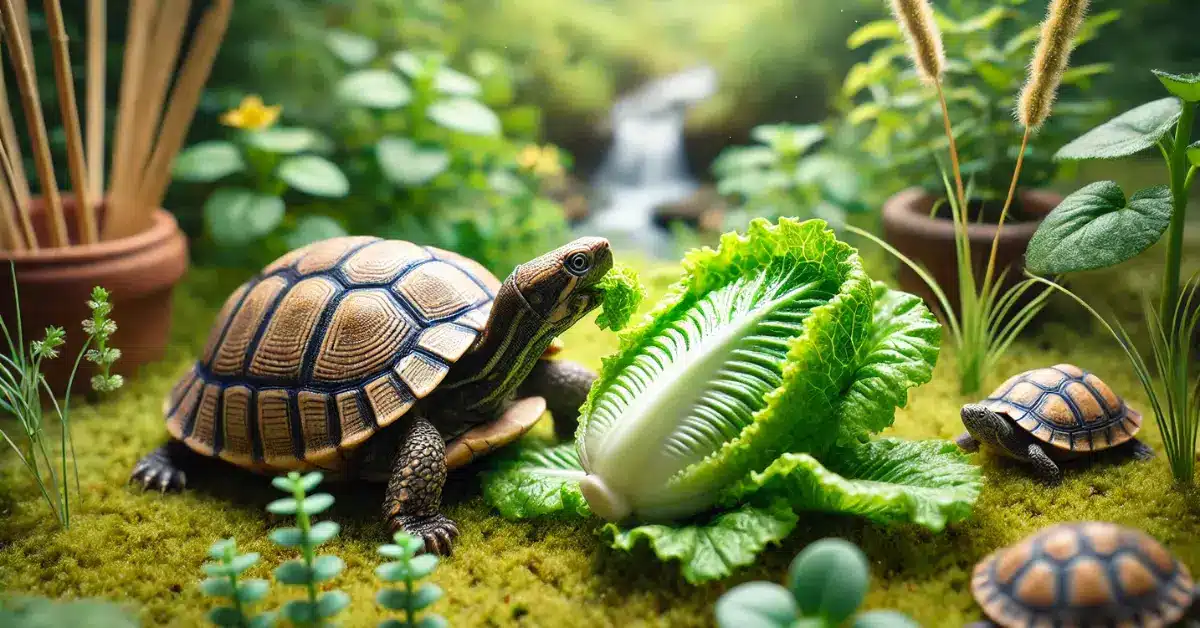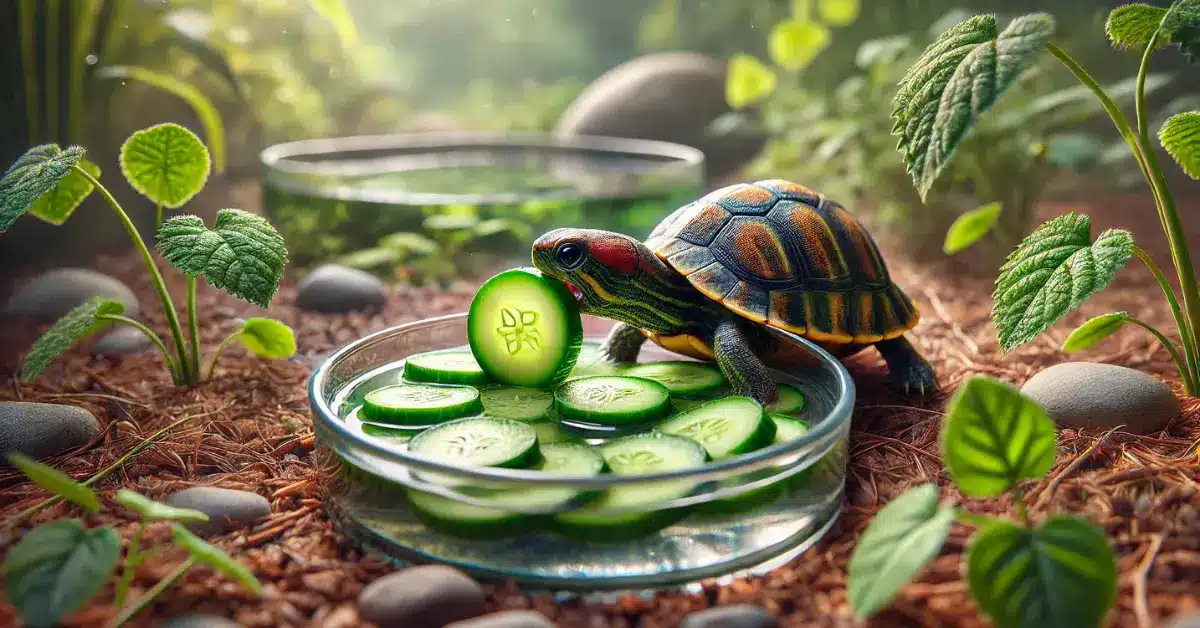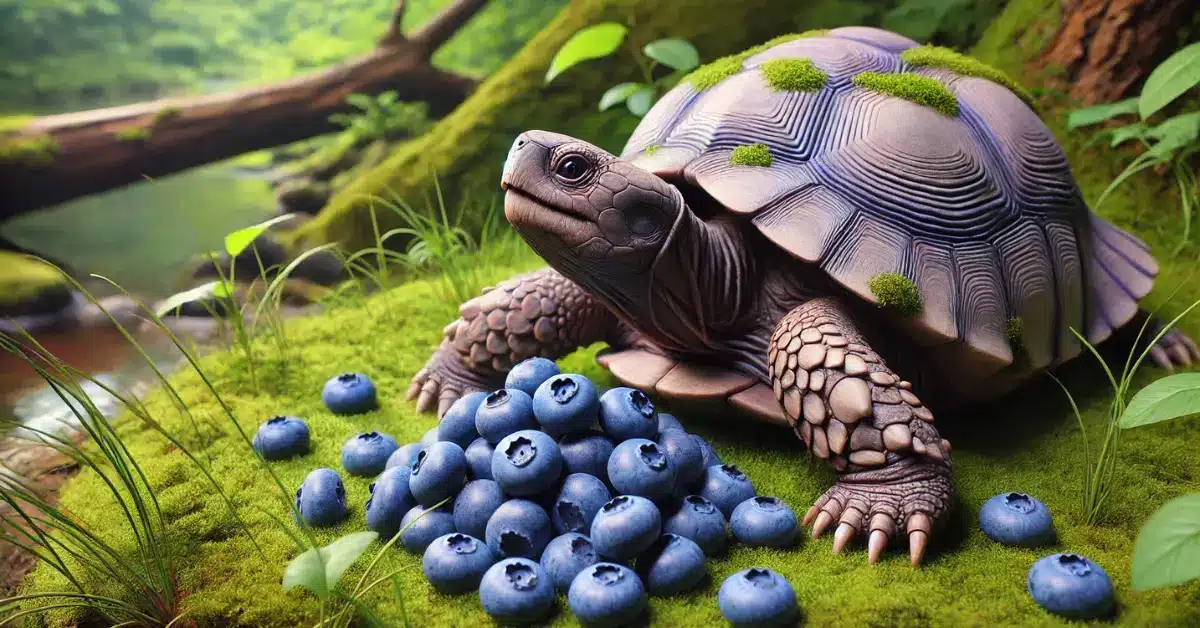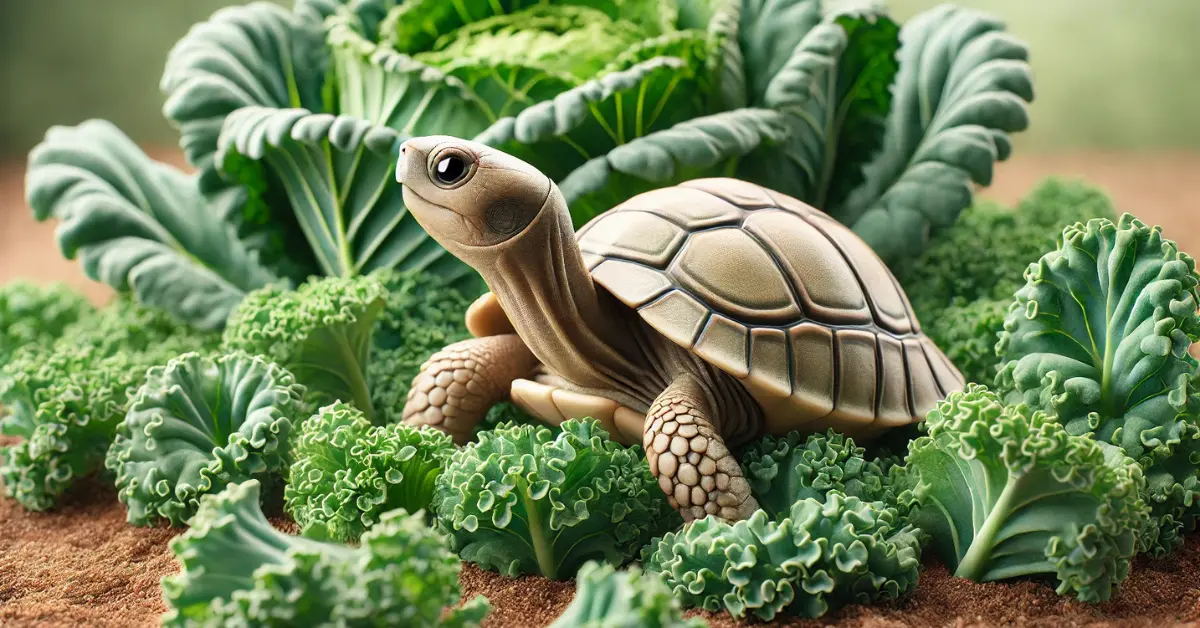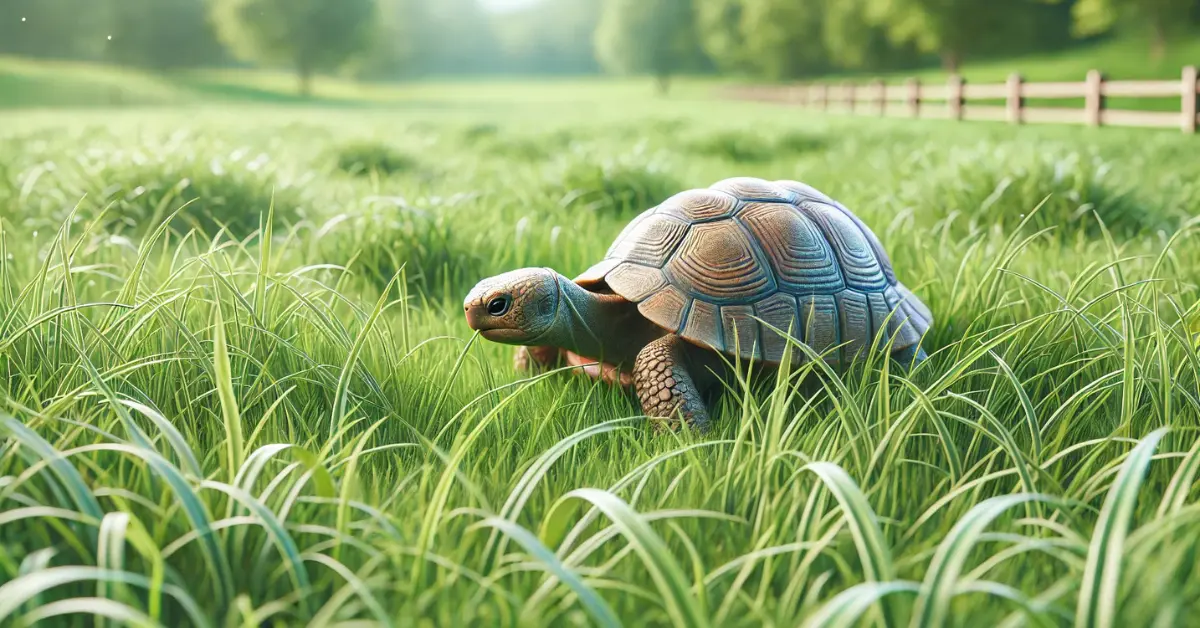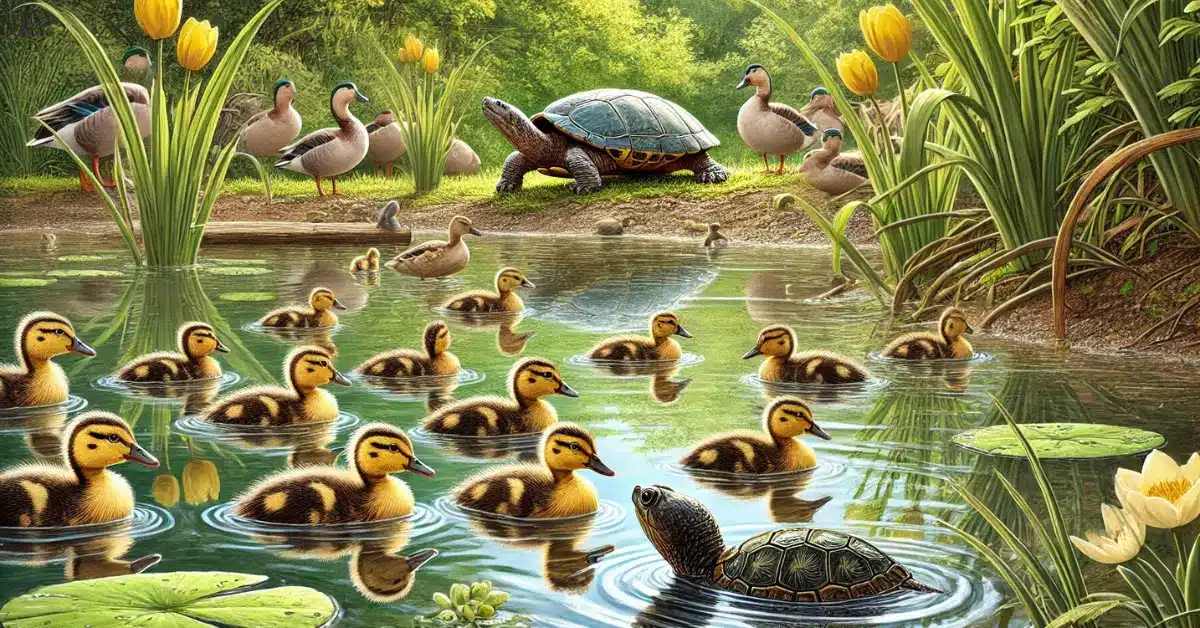Welcome to Theturtles.info! Have you ever wondered, What Do Turtle Eggs Look Like? Turtle eggs are as fascinating as the turtles themselves, showing a range of shapes, sizes, and textures. In this blog, we’ll explore the unique characteristics of turtle eggs, from their size and color to how they’re protected and developed. Join us on this journey to uncover the secrets of these amazing eggs and the vital role they play in the life cycle of turtles.
Table of Contents
ToggleGeneral Characteristics of Turtle Eggs
Turtle eggs show some unique features that make them fascinating. Let’s break down these characteristics:
Shape and Size Variations
Turtle eggs come in different shapes and sizes depending on the species. Generally, they are round or oval. Some species lay eggs that are nearly spherical, while others have more elongated shapes. The size of the eggs can range from about the size of a grape to as large as a golf ball. For example, the eggs of the leatherback turtle are larger compared to those of the loggerhead turtle.
Texture and Feel
The texture of turtle eggs is quite distinct. Most turtle eggs have a leathery shell rather than a hard one. This leathery texture gives them a slightly squishy feel. When you touch them, they can feel a bit soft and pliable, unlike the hard shells of bird eggs. This soft shell helps protect the developing embryo while allowing some flexibility as the eggs are buried in sand or soil.
Color Range
Turtle eggs vary in color, though they often start out white or pale cream. As they mature, some eggs may change color slightly. This color change can be due to various factors, including the type of soil or sand where they are buried. In general, though, you won’t find very bright colors in turtle eggs. They typically blend in well with their surroundings to avoid attracting predators.
Sea Turtle Eggs: Nature’s Perfect Spheres
Leatherback Turtle Eggs
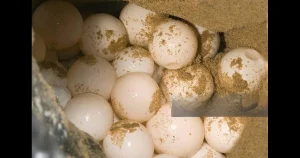
Leatherback turtle eggs are the largest among sea turtles. These eggs are typically round and have a leathery texture. They are usually pale in color, ranging from white to a light cream. The leathery shell allows them to be flexible and better suit to the sandy beaches where leatherbacks nest. Their size and robust shell make them a bit easier to spot compared to other sea turtle eggs.
Green Sea Turtle Eggs
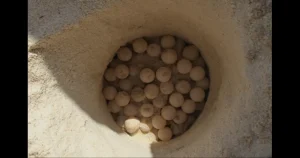
Green sea turtle eggs are slightly smaller than leatherback eggs but still quite noticeable. They are generally round and have a soft, leathery shell. The color of green sea turtle eggs is often a light, translucent white. As these eggs develop, they can sometimes become a bit opaque. Green sea turtles lay their eggs in large nests, and their eggs blend well with the sandy environment.
Loggerhead Turtle Eggs
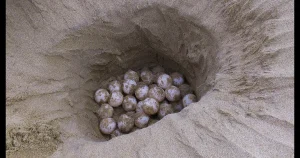
Loggerhead turtle eggs are smaller and more spherical compared to leatherback and green sea turtle eggs. They are soft and leathery, with a color that ranges from white to a pale yellow. Loggerhead turtles usually lay their eggs in nests that can hold up to 100 eggs. The eggs are well-camouflaged in the sand, helping protect them from predators.
Freshwater Turtle Eggs: Oval Wonders
Painted Turtle Eggs
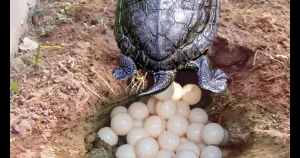
Painted turtle eggs are typically oval and have a slightly smooth texture. They are smaller compared to sea turtle eggs and usually have a creamy or pale yellow color. Painted turtles lay their eggs in nests that are dug into the soil, and their eggs are well-hidden to protect them from predators. The eggs are soft to the touch and have a somewhat delicate feel.
Snapping Turtle Eggs
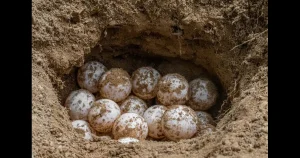
Snapping turtle eggs are oval and slightly larger than painted turtle eggs. They have a leathery texture, similar to sea turtle eggs. The color of snapping turtle eggs ranges from white to a light beige. Snapping turtles bury their eggs in sandy or muddy areas, and their eggs are designed to blend into their surroundings to avoid detection by predators.
Red-eared Slider Eggs
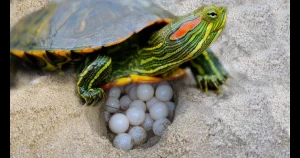
Red-eared slider eggs are also oval but tend to be smaller and more elongated compared to snapping turtle eggs. They have a smooth, leathery shell and are usually white or light cream in color. Red-eared sliders lay their eggs in nests that are often dug into the soil near water. The eggs’ texture and color help them blend into the environment, making them less visible to potential threats.
The Nesting Process: From Sand to Shell
Nesting Site Selection
Turtles choose their egg-laying spots carefully. Female sea turtles swim far to find the perfect beach. They pick a sandy spot that is safe from big waves and predators. Freshwater turtles look for quiet, hidden spots near water. They dig into the sand or mud to find the best place for their eggs.
Egg-Laying Ritual
When a turtle finds the right spot, she starts laying her eggs. For sea turtles, this means digging a big hole in the sand with her back flippers. She puts her eggs in the hole and covers them with sand to keep them safe. Freshwater turtles dig smaller holes and lay their eggs in batches. They work hard to hide their eggs from danger.
Camouflage Techniques
Turtles have clever ways to protect their eggs. Sea turtles cover their nests with sand so they blend in with the beach. This makes it harder for animals to find and eat the eggs. Freshwater turtles may cover their eggs with soil or leaves to keep them hidden. Camouflage helps keep the eggs safe until the baby turtles are ready to hatch.
Turtle Egg Development: A Hidden Miracle
Incubation Period
The time it takes for turtle eggs to hatch depends on the species and the temperature. Sea turtle eggs usually take between 45 and 75 days to hatch. Freshwater turtle eggs might hatch a bit sooner, around 60 days. During this time, the eggs develop inside their shells, and baby turtles grow ready to emerge.
Temperature-Dependent Sex Determination
The temperature of the nest affects whether the turtles will be male or female. Warmer temperatures usually produce females, while cooler temperatures produce males. This temperature rule helps keep the balance between male and female turtles. The sand or soil where the eggs are buried is very important for deciding the sex of the hatchlings.
Embryonic Growth Stages
Inside the egg, the baby turtle goes through different stages of growth. It starts as a tiny group of cells and slowly becomes a turtle with a shell and legs. Over time, the baby turtle grows and gets ready to break out of the egg. This amazing process shows how turtles develop before they hatch.
Threats to Turtle Eggs
Natural Predators
Turtle eggs face many dangers from nature. Animals like raccoons, foxes, and birds often dig up and eat the eggs. Even small creatures, like ants, can be a problem. The eggs have soft shells that don’t always keep these hungry animals away.
Human Interference
Humans can also be a threat to turtle eggs. Sometimes, people disturb or damage nests by accident. Beach construction and off-road vehicles can harm the nests or make it hard for turtles to find good places to lay their eggs. In some cases, people even steal the eggs, which is illegal and harmful.
Climate Change Impacts
Climate change affects turtle eggs in several ways. Warmer temperatures can lead to more female turtles being born, which upsets the balance between males and females. Extreme weather, like storms, can destroy nests or make it hard for eggs to develop. Rising sea levels can also change the places where turtles can lay their eggs.
Conservation Efforts: Protecting the Next Generation
Nest Monitoring Programs
To help protect turtle eggs, many groups use nest monitoring programs. These programs track where turtles lay their eggs and check on their condition. By keeping an eye on the nests, scientists can protect them from predators and human damage. They also collect information to help improve conservation efforts.
Hatcheries and Relocation Efforts
Sometimes, experts move turtle eggs to special hatcheries. These are safe places where eggs can develop without being threatened by predators. When needed, eggs are carefully moved from dangerous areas to safer locations. This helps more eggs hatch and baby turtles survive.
Public Education Initiatives
Teaching people about turtle conservation is very important. Education programs explain why it’s crucial to protect turtle nests and the dangers turtles face. By spreading the word, these programs help people understand how they can help, like respecting nesting sites and supporting conservation projects. An educated community is better at protecting turtles and their eggs.
Read more: Are Turtles Born With Their Shells?
Amazing Facts of Turtle Egg
Record-Breaking Clutch Sizes
Turtles can lay a lot of eggs in one nest. For example, a female leatherback turtle can lay up to 100 eggs at a time! This big number helps make sure that some baby turtles will survive. Even though many eggs face dangers, having so many eggs increases the chances that some will hatch and grow into turtles.
Unique Adaptations
Turtle eggs have special features to help them stay safe. Sea turtle eggs have soft, leathery shells that can handle being buried in sand or mud. Some turtle eggs also blend in with their surroundings, making it hard for predators to find them. These special traits help protect the eggs until the baby turtles are ready to hatch.
Cultural Significance in Various Societies
Turtle eggs are important in many cultures. In some places, they are seen as symbols of new life and good luck. For example, in certain Pacific Island cultures, people use turtle eggs in special ceremonies and sometimes as food. Today, many people are working to protect turtle eggs because they are important for the environment and the survival of turtles.
Conclusion
So, What Do Turtle Eggs Look Like? Turtle eggs come in different shapes and sizes. Sea turtle eggs are often big and leathery, while freshwater turtle eggs are smaller and oval-shaped. Each type of egg has special features to help it stay safe until the baby turtles are ready to hatch.
At Theturtles.info, we hope this guide helps you learn more about turtles and their eggs. By understanding these amazing creatures and the challenges they face, we can all help protect them. Keep exploring and stay informed to support turtle conservation.
FAQs: What Do Turtle Eggs Look Like?
What do turtles egg look like?
Turtle eggs vary depending on the species. Sea turtle eggs are usually round or oval and have a soft, leathery shell. They are often white or light cream in color. Freshwater turtle eggs are smaller, oval-shape, and also have a soft, leathery shell. They tend to be cream or pale yellow.
How big are turtle eggs?
The size of turtle eggs depends on the type of turtle. Sea turtle eggs, like those from the leatherback turtle, can be as large as a golf ball. Freshwater turtle eggs are usually smaller, about the size of a marble or a grape.
Why are turtle eggs soft instead of hard?
Turtle eggs have soft, leathery shells to protect them while allowing some flexibility. This is important because turtles lay their eggs in sandy or muddy nests where a hard shell might not work as well. The soft shell also helps the eggs survive in their natural environment.
What color are turtle eggs?
Turtle eggs can be white, cream, or pale yellow. The exact color may change slightly as the eggs develop. Sea turtle eggs are often more translucent, while freshwater turtle eggs are generally more opaque.
How do turtle eggs stay hidden from predators?
Turtles use camouflage to protect their eggs. Sea turtles bury their eggs in the sand, which helps them blend in with the beach. Freshwater turtles often bury their eggs under soil or leaves. This natural camouflage makes it harder for predators to find and eat the eggs.
How long does it take for turtle eggs to hatch?
The time it takes for turtle eggs to hatch depends on the species and the temperature. Sea turtle eggs usually take between 45 and 75 days to hatch. Freshwater turtle eggs might hatch a bit sooner, around 60 days.
How does temperature affect turtle eggs?
Temperature plays a big role in the development of turtle eggs. Warmer temperatures often lead to more female turtles being born, while cooler temperatures tend to produce more males. Temperature also affects how well the eggs develop and how long it takes for them to hatch.
What happens if a turtle egg is damage?
If a turtle egg is damage, it can be more likely to dry out or be eaten by predators. A damaged egg might not develop properly, and the baby turtle inside might not survive. That’s why it’s important for turtles to lay their eggs in safe, well-hidden places.

